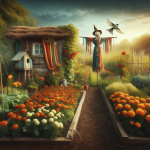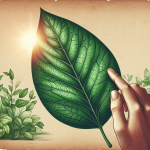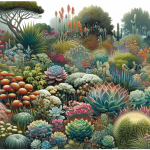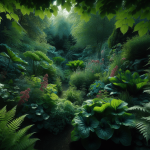This post may contain affiliate links. As an Amazon Associate, we may earn commissions from qualifying purchases.
Imagine stepping onto your rooftop and being greeted by a lush, vibrant garden that brings life and color to your urban space. In the article “What Are The Best Plants For A Green Roof Garden?”, you’ll discover a delightful array of plant options that are not only aesthetically pleasing but also hardy and well-suited for the unique conditions of a rooftop environment. From resilient sedums and drought-tolerant grasses to charming perennials and native wildflowers, you’ll find the perfect green companions to create an inviting, eco-friendly oasis above your home. Have you ever gazed at the rooftops in your city and wondered how to transform them into lush, green oases? A green roof garden may just be the answer. Not only do these elevated gardens add a touch of nature to an otherwise industrial space, but they also provide numerous environmental benefits, from better air quality to improved insulation. But, the big question remains: what are the best plants for a green roof garden?
Understanding Green Roof Gardens
Before diving into the types of plants that are ideal for your green roof garden, it’s essential to understand what green roof gardens are and why they are becoming increasingly popular. Essentially, a green roof garden is a layer of vegetation planted over a waterproofing system installed on the top of a flat or slightly sloped roof. They can provide numerous benefits, including energy efficiency, stormwater management, increased biodiversity, and reduced urban heat island effect.
Types of Green Roofs
When choosing plants, it’s crucial to first understand the different types of green roofs: extensive, semi-intensive, and intensive. Each type has unique features and requirements, which will influence your plant selection.
Extensive Green Roofs: These are lightweight and low-maintenance with a shallow layer of soil, usually around 1.6 to 5 inches deep. They primarily support hardy, drought-tolerant plants such as sedums, mosses, and grasses.
Semi-Intensive Green Roofs: Combining elements of both extensive and intensive roofs, these have a soil depth of 5 to 8 inches, providing more plant diversity, including herbs, perennials, and small shrubs.
Intensive Green Roofs: These are akin to ground-level gardens with soil depths greater than 8 inches. They can accommodate a wide range of plants, including trees, shrubs, and even water features, but require significant structural support and maintenance.
Key Factors to Consider When Choosing Plants
Several critical factors will guide your choice of plants for your green roof garden. Here’s what to consider:
Climate and Weather Conditions
Your local climate will play a significant role in determining which plants will thrive on your green roof. Factors such as temperature extremes, wind exposure, and precipitation will all impact plant survival. It’s essential to choose plants that are well-suited to your region’s climate.
Structural Support and Weight Load
Not all roofs are created equal, and the weight capacity of your roof will dictate which plants you can support. Extensive roofs, with their lighter soil depths, can’t carry the same loads as intensive roofs.
Soil Depth and Type
Different plants require different soil depths to thrive. Ensure that the soil depth and type on your green roof align with the requirements of your chosen plants.
Sun Exposure
Understanding how much sunlight your roof receives will also influence your plant selection. Some plants thrive in full sun, while others prefer partial shade.
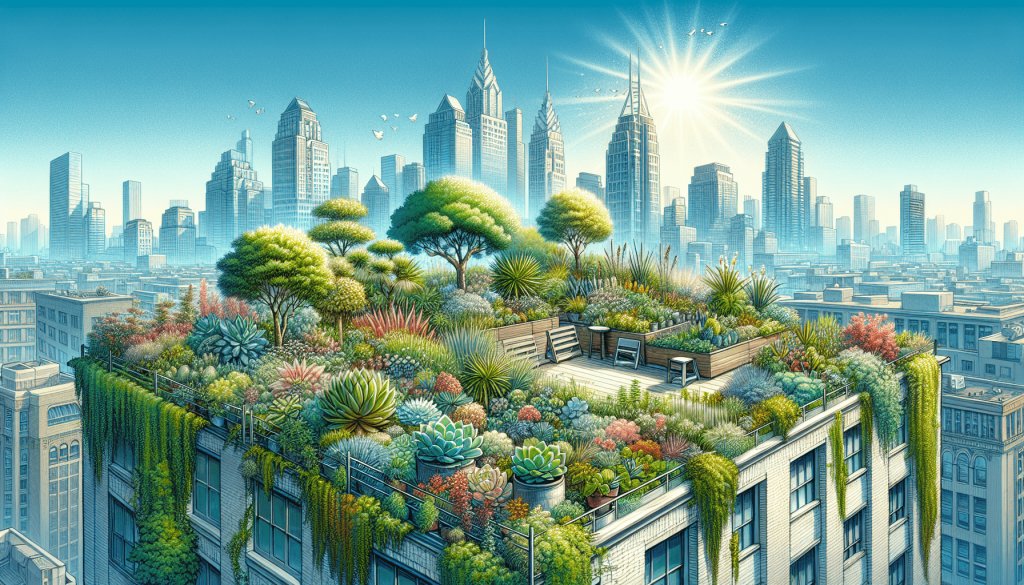
Best Plants For Extensive Green Roofs
With the constraints of limited soil depth and weight load, extensive green roofs are best suited for resilient, low-maintenance plants.
Sedums
Sedums are a popular choice for extensive green roofs because they are hardy, drought-resistant, and can thrive in shallow soil. Here are a few types to consider:
| Sedum Type | Features |
|---|---|
| Sedum Acre | Yellow flowers, forms dense mats |
| Sedum Album | White flowers, turns red in stress conditions |
| Sedum Spurium | Pink flowers, excellent ground cover |
Grasses
Certain grasses can also be an excellent choice for extensive green roofs. Their resilience and ability to withstand wind and varying weather conditions make them ideal.
| Grass Type | Features |
|---|---|
| Festuca Glauca | Blue-green foliage, drought-tolerant |
| Carex Flacca | Low-maintenance, suitable for moist conditions |
| Helictotrichon | Ornamental, blue oat grass |
Mosses and Herbs
Mosses and low-growing herbs add variety and texture to your green roof garden. They are usually very low-maintenance and can thrive in less fertile soil.
| Plant Type | Features |
|---|---|
| Thymus Serpyllum | Aromatic, purple flowers |
| Sagina Subulata | Forms dense mats, white flowers |
| Hypnum Cupressiforme | Carpet moss, excellent for shaded areas |
Best Plants For Semi-Intensive Green Roofs
Semi-intensive green roofs offer the possibility of greater plant diversity due to deeper soil and increased weight capacity.
Perennials
Perennials are a great addition to semi-intensive green roofs as they return year after year, adding color and interest.
| Perennial Type | Features |
|---|---|
| Achillea Millefolium | Yarrow, drought-tolerant, various colors |
| Echinacea Purpurea | Coneflower, attracts pollinators |
| Geranium Sanguineum | Hardy, pink or purple flowers |
Small Shrubs
Small shrubs can add structure and height to your green roof garden. Make sure to select shrubs that will not grow too large for the space.
| Shrub Type | Features |
|---|---|
| Lavandula Angustifolia | Lavender, aromatic, attracts bees |
| Hebe Albicans | Compact, white flowers |
| Potentilla Fruticosa | Small yellow flowers, hardy |
Herbs and Vegetables
Growing herbs and vegetables on your semi-intensive green roof can be a rewarding experience. They do require more care but can provide a fresh and local source of produce.
| Plant Type | Features |
|---|---|
| Rosmarinus Officinalis | Rosemary, hardy, fragrant |
| Allium Schoenoprasum | Chives, hardy, edible |
| Solanum Lycopersicum | Tomatoes, various varieties |
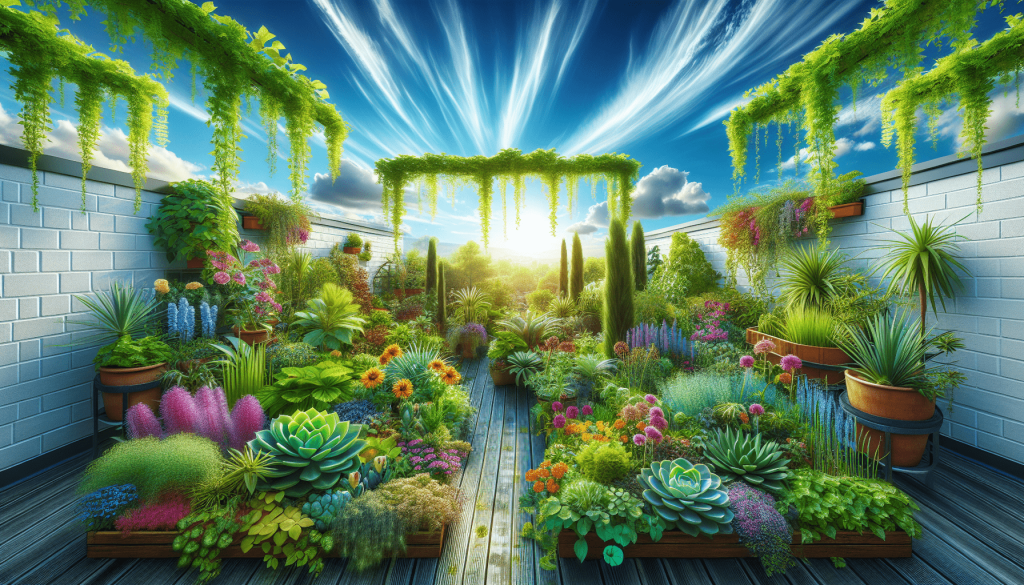
Best Plants For Intensive Green Roofs
Intensive green roofs offer the most flexibility in plant selection due to their deep soil and robust structural support.
Trees and Large Shrubs
Trees and large shrubs can transform your roof into a veritable rooftop forest. Just ensure your roof can handle the weight and root systems of these plants.
| Tree Type | Features |
|---|---|
| Acer Palmatum | Japanese maple, colorful foliage |
| Betula Pendula | Silver birch, hardy |
| Cornus Kousa | Kousa dogwood, beautiful flowers |
Flowering Plants
Adding flowering plants can bring bursts of color and attract pollinators to your roof garden.
| Flowering Plant Type | Features |
|---|---|
| Rudbeckia Hirta | Black-eyed Susan, drought-tolerant |
| Hemerocallis | Daylilies, various colors |
| Coreopsis | Tickseed, long-blooming season |
Edibles and Annuals
An intensive green roof is a perfect space to cultivate a vegetable garden or grow beautiful annual flowers.
| Plant Type | Features |
|---|---|
| Cucumis Sativus | Cucumbers, climbing plant |
| Capsicum Annuum | Bell peppers, various colors |
| Petunias | Annual, wide color range |
Caring For Your Green Roof Plants
Once you’ve selected your plants, proper care and maintenance are crucial for their survival and your green roof’s longevity.
Watering
Watering requirements vary significantly between plant types. While sedums and mosses might thrive on rainwater alone, vegetables and flowering plants may need additional irrigation.
Fertilization
Even hardy plants need nutrients. Use organic fertilizers to feed your plants, but be cautious not to over-fertilize, which could harm them and runoff into waterways.
Pruning and Weeding
Regular pruning keeps your plants healthy and within their designated spaces. Weeding is also necessary to prevent unwanted species from taking over your garden.
Pest Management
Pest problems can arise even on green roofs. Integrated Pest Management (IPM) practices can help control pests without the need for harmful chemicals.
Sustainability Benefits of Green Roof Gardens
Green roof gardens are more than just visually appealing. They offer a multitude of sustainability benefits that make them a smart choice for urban dwellers.
Improved Air Quality
Plants absorb carbon dioxide and release oxygen, helping to filter pollutants and improve urban air quality.
Energy Efficiency
Green roofs act as an insulative layer, reducing the need for heating in winter and cooling in summer, thereby lowering energy consumption.
Stormwater Management
Green roofs absorb rainwater, reducing runoff and decreasing the burden on urban drainage systems.
Biodiversity
By providing a habitat for various plants and animals, green roofs can increase urban biodiversity.
Urban Heat Island Reduction
Green roofs help to cool cities by providing more vegetation and reducing heat buildup on traditional asphalt or concrete roofs.
Conclusion
Deciding to create a green roof garden is an exciting and environmentally friendly venture. From the resilient sedums and grasses that populate extensive green roofs to the diverse shrubs, perennials, and trees suitable for intensive roofs, there are plenty of plant options to explore. Always remember to consider factors such as climate, structural support, and maintenance needs when selecting plants. With thoughtful planning and care, your green roof garden can become a thriving sanctuary that offers both aesthetic pleasure and ecological benefits to your urban environment.
Happy gardening!


